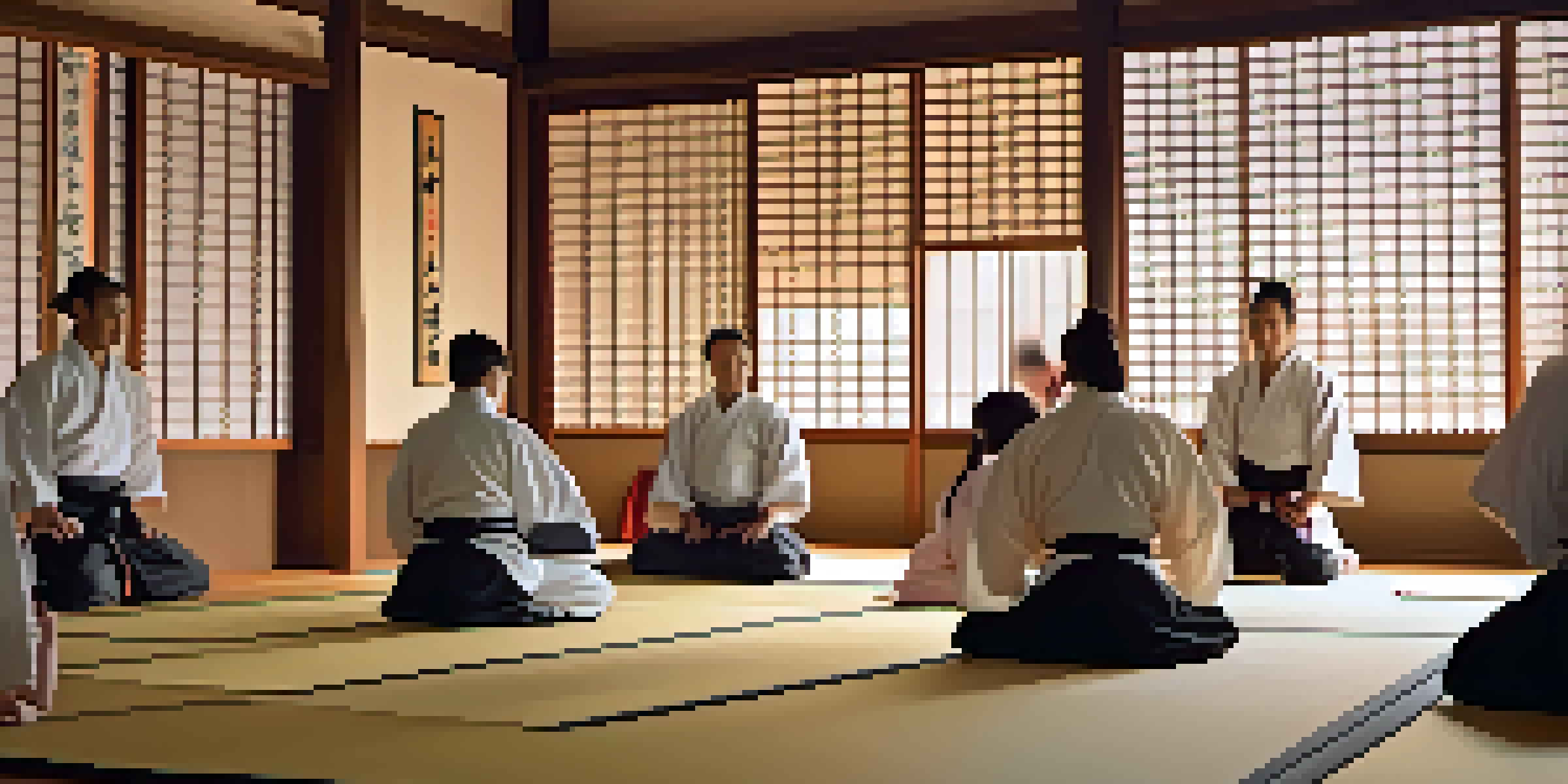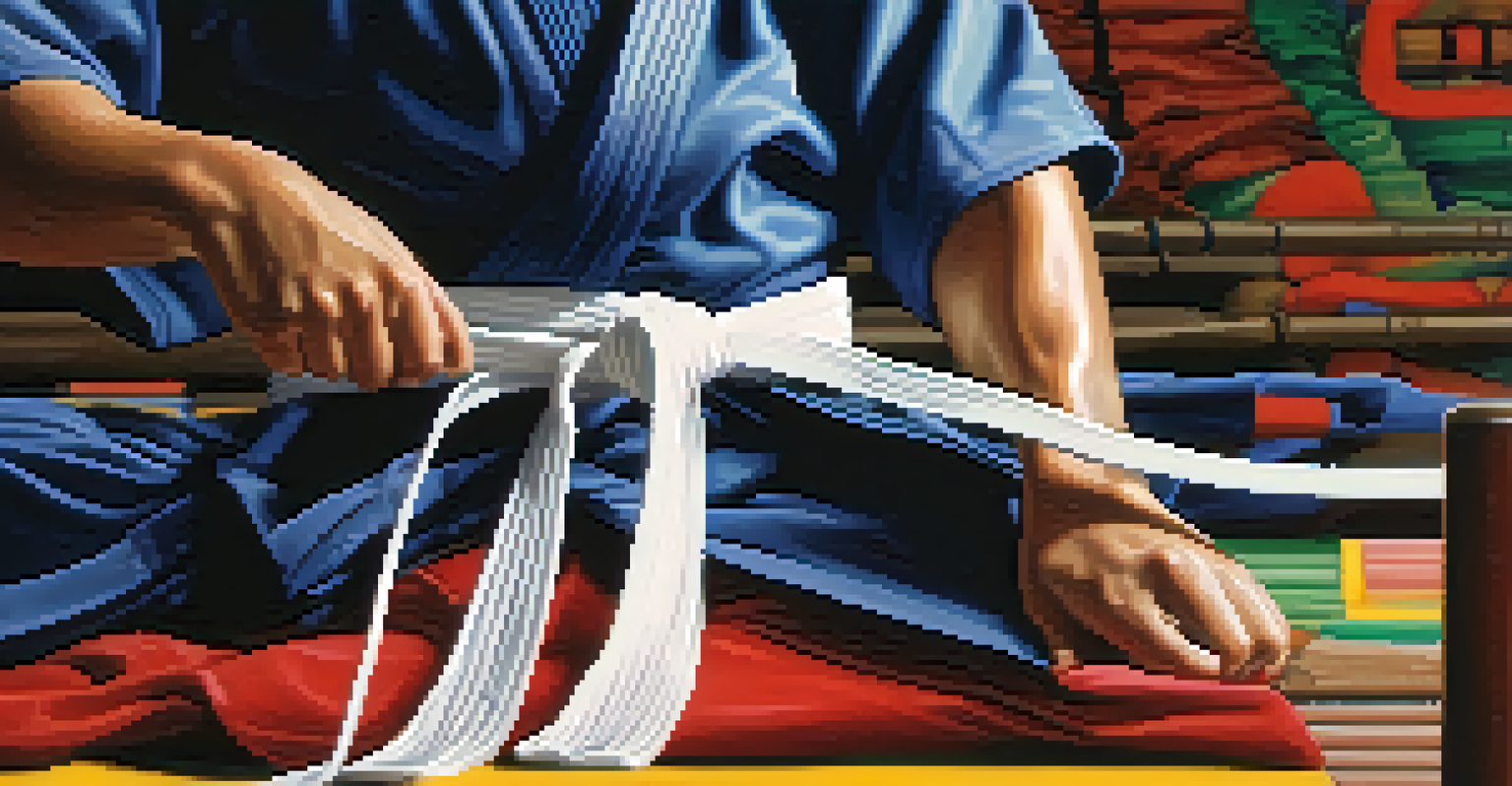Navigating Cultural Sensitivity in Martial Arts Training

Understanding the Roots of Martial Arts Traditions
Martial arts are deeply rooted in the cultures from which they originate. Each discipline carries its own history, values, and philosophies, which are often intertwined with the local customs and traditions. For instance, the respect shown in a traditional dojo reflects Japanese values, while Brazilian Jiu-Jitsu emphasizes community and collaboration.
Martial arts are a way of life, not just a set of movements.
When teaching or practicing martial arts, it’s essential to recognize these cultural nuances. Ignoring them can lead to misunderstandings or even disrespect, which can alienate students from their heritage. By understanding the roots, trainers can create a more inclusive atmosphere that honors each student's background.
Moreover, this understanding can enhance the learning experience. Students who see their cultural identity reflected in their training are likely to engage more deeply, leading to a richer, more meaningful practice.
The Importance of Respect in Martial Arts Training
Respect is a cornerstone of martial arts, and it transcends just physical practices. It encompasses understanding and honoring the cultural significance behind various techniques, rituals, and protocols. For example, bowing before entering the dojo is not merely a formality; it signifies respect for the art and its lineage.

As trainers, it's vital to instill this value of respect in students. This not only improves their skills but also fosters a sense of community and belonging. When students learn to respect each other and their diverse backgrounds, it creates a supportive environment that encourages personal growth.
Cultural Roots Enhance Training
Understanding the cultural roots of martial arts enriches the learning experience and fosters inclusivity.
Encouraging respectful dialogue about different traditions can further enhance this environment. By sharing stories or experiences related to their cultural practices, students can learn from one another, enriching their martial arts journey.
Embracing Diversity in the Dojo
A dojo often serves as a melting pot of cultures, bringing together individuals from various backgrounds. Embracing this diversity can lead to a more vibrant training environment, where different perspectives and techniques can be shared. For instance, a student from a Filipino martial arts background might introduce unique footwork or weapon techniques that could benefit the entire class.
Cultural sensitivity is the key to understanding and appreciating the richness of our diverse world.
Creating a space where different cultural expressions are welcomed promotes inclusivity. Trainers should encourage students to share their cultural practices related to martial arts, whether it’s specific warm-up exercises or unique forms of self-defense. This not only broadens everyone's knowledge but also fosters mutual appreciation.
However, it’s essential to approach this sharing with sensitivity. Not all practices may be suitable for every environment, so fostering open conversations about what is appropriate can help navigate these waters smoothly.
Addressing Cultural Appropriation in Martial Arts
Cultural appropriation occurs when elements from one culture are adopted by another, often without understanding or respect. In martial arts, this can manifest when techniques, attire, or rituals are used without acknowledging their origins. It’s crucial for trainers to educate themselves and their students about these nuances to avoid unintentional disrespect.
By fostering discussions around cultural appropriation, trainers can help students understand the importance of context. For example, wearing a gi might be acceptable in a karate class, but it may not hold the same significance in other martial arts. Recognizing these differences can prevent misunderstandings and promote a respectful learning environment.
Respect is Essential in Practice
Instilling respect for diverse backgrounds and traditions cultivates a supportive and communal training environment.
Moreover, discussing cultural appropriation can lead to deeper insights into one’s own practice. Students can develop a greater appreciation for the art they study, understanding it not just as a physical discipline but as a cultural heritage.
Creating Inclusive Training Environments
An inclusive training environment is one where all students feel valued and respected, regardless of their background. Trainers play a pivotal role in shaping this environment by actively promoting inclusivity. Simple gestures, such as ensuring everyone has the opportunity to participate and contribute, can significantly affect how students perceive their training space.
Incorporating diverse teaching methods can also enhance inclusivity. For instance, visual learners might benefit from demonstrations, while kinesthetic learners may thrive in hands-on training. By catering to various learning styles, instructors can ensure that every student feels seen and heard.
Additionally, regular feedback from students can help trainers gauge the inclusivity of their environment. By encouraging open dialogue, trainers can adjust their approaches as needed, ensuring that everyone feels comfortable and engaged.
Encouraging Open Dialogue About Cultural Sensitivity
Open dialogue about cultural sensitivity is crucial for fostering understanding in martial arts training. Creating a safe space where students can ask questions or express concerns about cultural practices encourages learning and growth. For instance, if a student feels uncomfortable with a specific tradition, they should feel empowered to speak up.
Trainers can facilitate these conversations by regularly addressing cultural sensitivity in their classes. Incorporating discussions about the significance of certain practices or rituals can help demystify them for students. This not only enhances understanding but also reinforces the importance of respect and awareness in practice.
Encouraging Open Dialogue Matters
Facilitating conversations about cultural sensitivity empowers students and enhances their martial arts journey.
Moreover, sharing personal experiences related to cultural sensitivity can humanize the conversation. Trainers can share their journeys of learning and understanding, which can inspire students to approach cultural differences with curiosity rather than judgment.
The Role of Cultural Sensitivity in Personal Growth
Cultural sensitivity is not just about respecting traditions; it also plays a significant role in personal growth. Engaging with diverse cultures can expand one’s worldview, fostering empathy and understanding. In martial arts, this can translate to enhanced interpersonal skills, resilience, and adaptability.
As students learn to navigate cultural differences, they may also discover new perspectives on their own practices. This can lead to a more profound connection with their training, enhancing both their physical and mental capabilities. For example, understanding the cultural context behind a technique can deepen its application in real-world situations.

Ultimately, cultivating cultural sensitivity can enrich the martial arts journey for both students and trainers alike. It transforms training from a mere physical discipline into a holistic practice that nurtures the body, mind, and spirit.